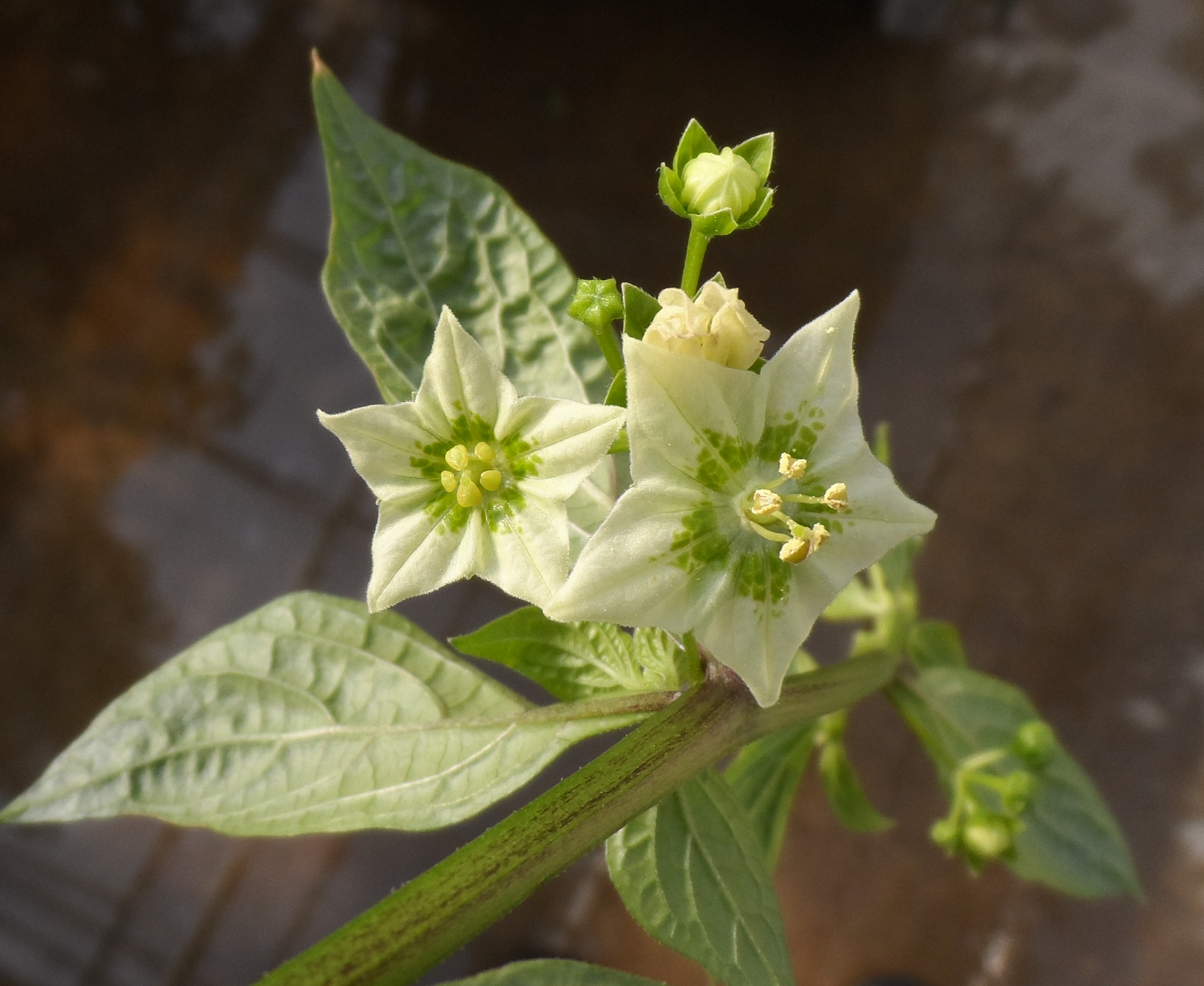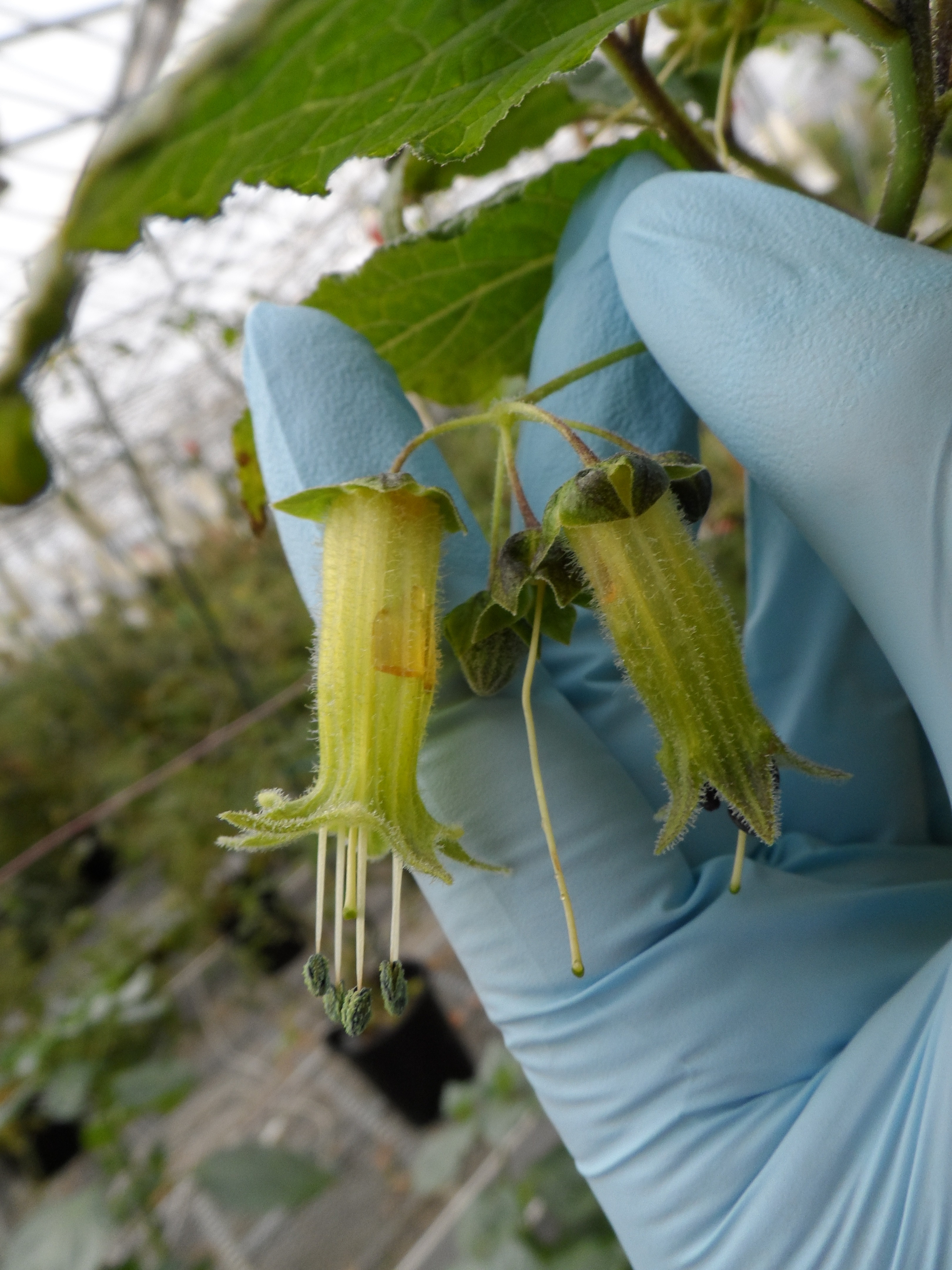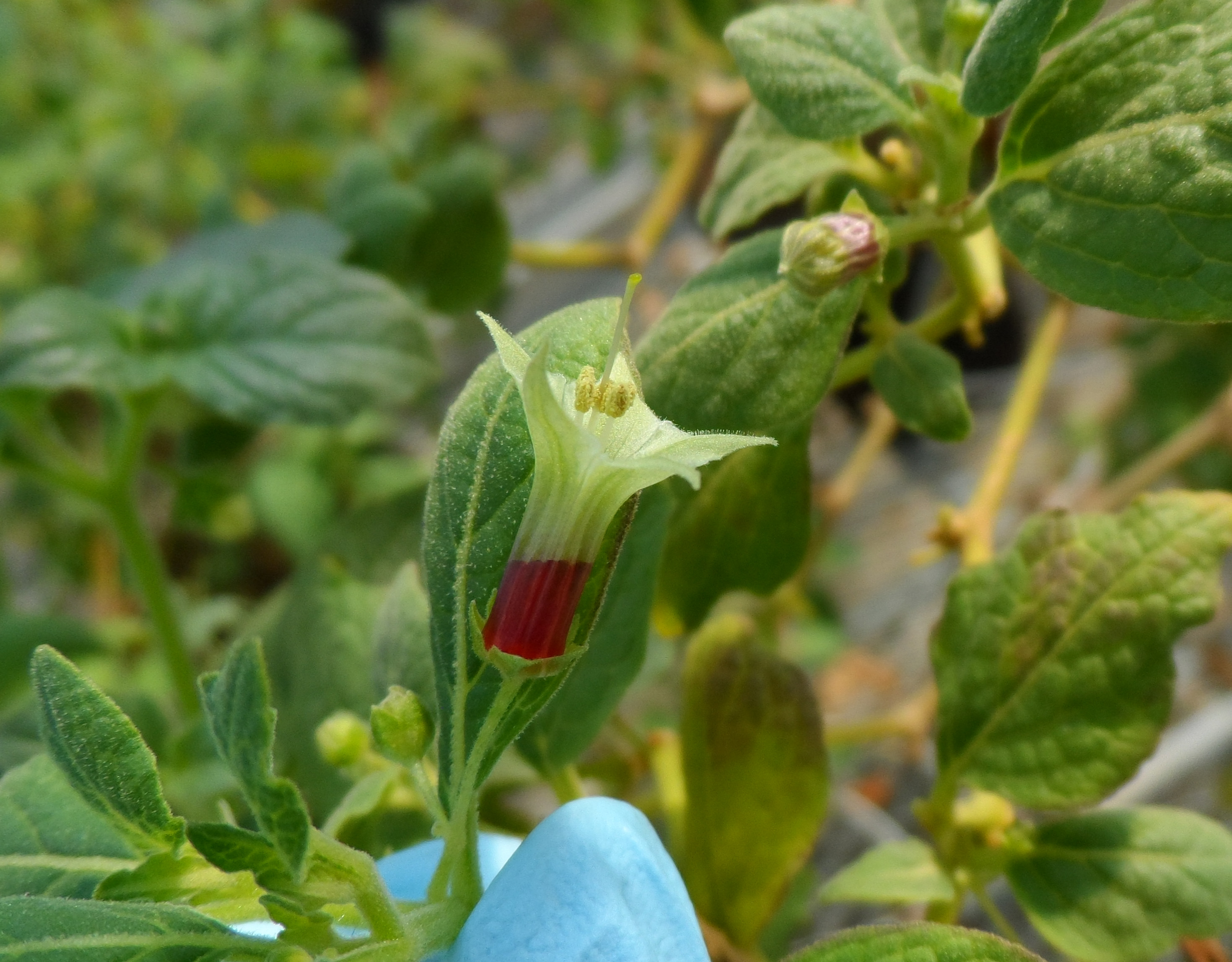Relatives
The wild tomatoes are part of a much larger genus (group of closely related species): Solanum. Along with tomatoes, the genus Solanum contains more than 1300 species, distributed around the world on almost every continent. Among these are several other important crop species, including potato and eggplant, as well as the wild relatives of these crops. Less well known are the closer wild relatives of tomatoes. Some of these are described below, as is one other species group (the genus Jaltomata) that is among the closest relatives of the genus Solanum.
Other Solanum
Four other wild nightshades species are most closely related to the wild tomato group. All four species are also native to South America, and share similarities with their tomato relatives - like bright yellow flowers and non-prickly leaves - as well as some differences - like scented flowers, which are not found among wild tomatoes.

S. juglandifolium
This species is found in the Andes of Colombia, Ecuador, and Peru, in temperate mid-elevation rainforests. It often grows as a woody vine, and has scented flowers and green fruit.

S. ochranthum
Like its sister species, S. juglandifolium, this species grows as a woody vine and produces green fruit with winged seeds. S. ocranthum is found at moist sites, such as along riverbanks, in the Andes of Ecuador and Peru.

S. lycopersicoides
Found in southern Peru and northern Chile, this species grows on dry rocky slopes. Similar to the wild tomato, S. pennellii, the 'style' in the center of its flower is hooked.

S. sitiens
This species is native to rocky slopes and ravines of northern Chile, and is found between 2,500 and 3,500 metres elevation. Its fruits are dry and green-brown when ripe.
Jaltomata
The genus Jaltomata shared a common ancestor with Solanum about 17 million years ago. Like the wild tomatoes, this group is primarily found in northwestern South America, although some species are also found through Central America and up into southwestern USA. Unlike tomatoes, though, these species have extraordinary floral diversity, including variation in flower size and shape, and in nectar color. While tomato flowers are all star-shaped with five petals, some Jaltomata species have tubular-shaped flowers or flowers that are bell-shaped ('campanulate'), in addition to species with a tomato-like 'rotate' shape. Unlike tomato species, all Jaltomata produce nectar as another reward for pollinators; depending on the species, this nectar varies in color from light yellow to deep red. Some examples of this floral diversity include:

Jaltomata repandidentata
This species has flowers that are similar in shape to tomatoes, but its petals are white, it has five unfused anthers (the structures that produce pollen), and it produces small amounts of concentrated, light yellow nectar.

Jaltomata quipuscoae
This species has a light purple, cup-shaped flower that contains five pools of deep red nectar. The nectar is likely a reward for pollinators like birds.

Jaltomata aijana
The flowers of this species are elongated and tubular, and contain plenty of orange colored nectar. If the nectar is removed by pollinators, it will start to refill again within a few hours.

Jaltomata dendroidea
This species short-tubular flowers produce red nectar. It is thought that orange or red nectar evolved independently at least several times in Jaltomata.

Jaltomata umbellata
has small tubular flowers with deep red nectar. Because the petals are white, this nectar can seen through the wall of the flower.

Jaltomata calliantha
is closely related to J. quipiscoae. Its whitish-green cup-shaped flowers produce orange nectar that darkens in color as each flower gets older.

Jaltomata procumbens
is closely related to Jaltomata repandidentata; they share many floral characters in common, and are likely pollinated by bees and other insects.

Jaltomata darcyana
Jaltomata species vary in the color of their ripe fruit. This species produces fruits that turn dark purple when they ripen. Other mature fruit colors in Jaltomata include red, orange, and green.

Jaltomata biflora
This species has short, wide tubular flowers with large amounts of dilute orange nectar. Its fruits are orange when ripe.